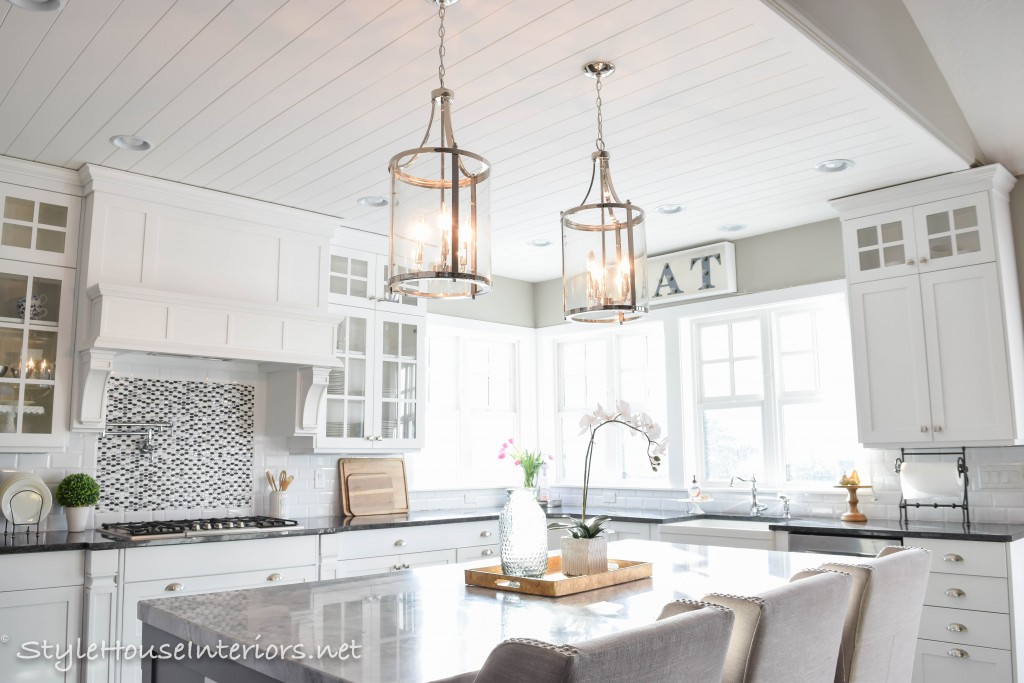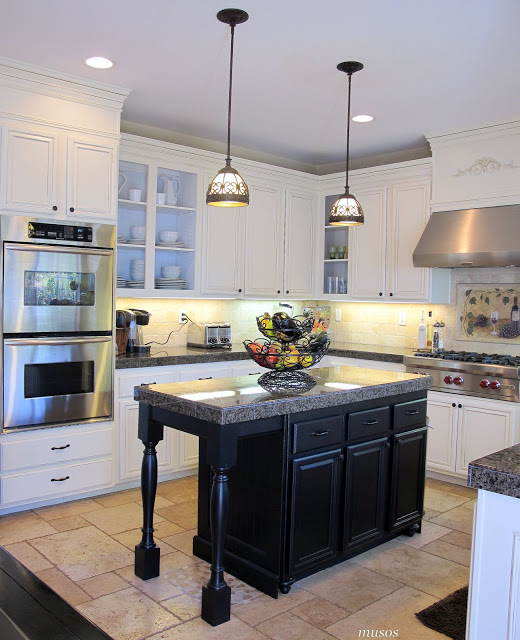When it comes to kitchen islands, the feet or base that support this central fixture play a crucial role in both the functionality and aesthetics of the kitchen. Kitchen island feet are not only structural components but also contribute to the overall design and stability of the island.
The choice of kitchen island feet varies widely, ranging from simple and utilitarian to ornate and decorative. One common type of feet is the cabinet-style base, which mirrors the design of kitchen cabinets. These feet provide a cohesive look in kitchens where the island complements the cabinetry, creating a seamless and integrated appearance.
Open or exposed kitchen island feet are another popular choice. These feet, often made of wood or metal, give the island a more furniture-like appearance. They contribute to a sense of openness and can be an excellent option for those who want their kitchen island to stand out as a distinct piece of furniture.
For a modern and streamlined look, some kitchen islands feature hidden or recessed feet. These feet are strategically placed to provide support without being prominently visible. The result is a floating or suspended effect, adding a touch of contemporary elegance to the kitchen.

The material of the kitchen island feet is a significant consideration. Wood, metal, and even stone are commonly used materials for crafting feet. The choice of material often aligns with the overall design theme of the kitchen and the desired level of durability. For instance, wooden feet may contribute to a more traditional or rustic aesthetic, while metal feet can impart an industrial or modern vibe.
Adjustable feet are a practical feature in kitchen islands. These feet can be modified to accommodate uneven floors, ensuring the island remains stable and level. This is particularly important in older homes or those with irregular flooring. Adjustable feet contribute to the functionality of the kitchen island, allowing for a more customized and user-friendly experience.
In terms of design elements, some kitchen island feet feature decorative carvings, molding, or other embellishments. These details add a touch of elegance and can be chosen to complement other decorative elements in the kitchen. Decorative feet can transform a simple kitchen island into a focal point, contributing to the overall visual appeal of the space.
The size and scale of the kitchen island feet should harmonize with the dimensions of the island itself. Larger islands may require sturdier and more substantial feet to provide adequate support. Conversely, smaller islands may benefit from more delicate or minimalist feet that do not overpower the design.

Functionality is a key consideration when choosing kitchen island feet. Islands with integrated storage or appliances may have different support requirements, influencing the type of feet selected. Additionally, the clearance beneath the island provided by the feet can impact how the space is utilized, whether for seating, storage, or other purposes.
For those who appreciate versatility, mobile kitchen islands with wheels or casters provide a unique take on island feet. These islands can be moved and repositioned as needed, offering flexibility in kitchen layout and design. The wheels are typically lockable, ensuring stability when the island is in use.
In terms of installation, some kitchen islands come with pre-installed feet, while others allow for customization during assembly. Homeowners should follow the manufacturer’s instructions carefully to ensure proper installation and support for the island. Professional installation may be advisable for more complex designs or if structural modifications are required.
Maintenance of kitchen island feet involves routine cleaning and inspection. Depending on the material, regular dusting, wiping, or polishing may be necessary to keep the feet looking their best. Any signs of wear, damage, or instability should be addressed promptly to maintain the integrity of the island.

Consider the overall style of the kitchen when choosing the feet for your island. Whether you prefer a classic, contemporary, or eclectic look, there are various options available to complement your design aesthetic. Coordinating the feet with other elements in the kitchen, such as cabinet hardware or lighting fixtures, can create a cohesive and harmonious space.
When designing a kitchen island, it’s essential to strike a balance between form and function. While the feet contribute to the visual appeal of the island, their primary role is to provide stable support. Homeowners should prioritize both aesthetic preferences and practical considerations when selecting kitchen island feet to ensure a well-designed and functional kitchen space.
Kitchen island feet are integral components that impact both the structural integrity and visual appeal of this central kitchen fixture. From the choice of materials and design elements to considerations of functionality and maintenance, the selection of kitchen island feet requires thoughtful attention. Whether you opt for a classic cabinet-style base, open and exposed feet, or a modern recessed design, the feet contribute to the overall character of the kitchen island, making it a unique and customized centerpiece in your culinary space.

Extended kitchen island with a high table thanks to 2 feet HAIRPIN LEGS reinforced #

No leg island Kitchen designs layout, Kitchen design, Decor

How to figure spacing for Island pendants – Style House Interiors

Kitchen island legs Updated kitchen, Home kitchens, Kitchen

Thick Kitchen Island Legs. Kitchen island with thick legs. Wide Kitchen Leg Design Ideas

Kitchen Island with Legs

Cabinet Columns – Kitchen Cabinet Legs Kitchen cabinets with legs, Kitchen island columns

How to add legs to your kitchen island.

Related Posts:
- Couch Against Kitchen Island
- Pictures Of Kitchen Islands With Pendant Lighting
- Outdoor Kitchen Island Pictures
- Kichler Kitchen Island Lighting
- Single Light Over Kitchen Island
- Rd Kitchen Fashion Island Menu
- Kitchen Island Baseboard
- Ceiling Fan Over Kitchen Island
- Kitchen Center Island Pictures
- L Shaped Kitchen Ideas With Island